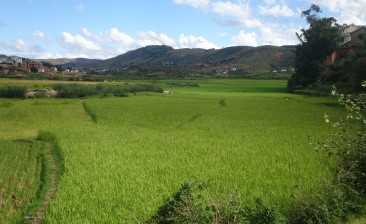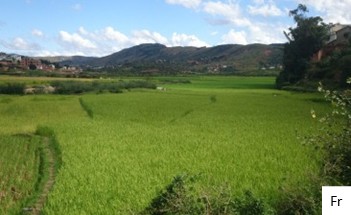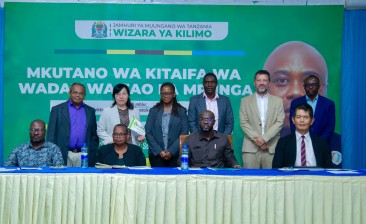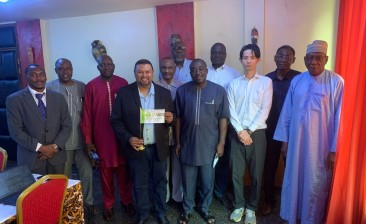Cameroon, March 2020
Third Working Week for the Revision of Cameroon’s NRDS
The third working week for the revision of Cameroon’s NRDS took place during 9-13 March 2020, in Yaounde. Task Force (TF) members refined the logical framework elements, rice pole definition, and strategy statement during this working week, by taking into account MINADER’s orientations for achieving Cameroon’s rice self-sufficiency objectives. In particular, physical targets in terms of paddy rice production, seed quantity and area to be sown were determined in a thorough manner.
TF members began the working week by continuing the writing of Chapter 7, which concerns the sub-strategies for the rice sub-sectors. A review of the progress made in writing this chapter led TF to revisit and refine the rice model proposed during the second week of work, in relation to the priority production zones and rice development poles (PDRs) Then, the strategy statement was also revisited and finalized in order to take into account the concerns resulting from the refinement of the sub-strategies in Chapter 7.
Thus, while ensuring alignment with MINADER’s short- and medium-term action plan for increasing local rice production, the PDRs were revised to 7, namely : Pole 1: Logone & Chari Plain; Pole 2: Benoue Valley; Pole 3: Noun Valley (Noun, Mbaw, Magba, Mbô); Pole 4: Mbam-Sanaga Area; Pole 5: Menchum Area; Pole 6: Akwaya Area and Pole 7: Bimodal Forest (Haut Nyong & Ebolowa).
The strategy statement was completed by specifying: (i) prioritization of ecological zones with high annual production potential and (ii) inclusion of improvement of techniques as the sixth priority segment.
The objectives in terms of paddy rice production and area to be sown per ecology were calculated, based on the initial official production data for 2018 and assumptions of yield increase (i) from 2 t/ha to 2.8 t/ha for upland rain fed ecology, (ii) from 4 t/ha to 4.5 t/ha for lowland rainfed ecology and (iii) from 5 t/ha to 6 t/ha for irrigated ecology. The objective of self-sufficiency is estimated to be reached in 5 years, i.e. in 2024 with 0.96 million tons of paddy, requiring the production of 6,525 tons of certified seeds for all ecologies combined. For 2025, the target was set at 1.03 million tons.
On the basis of the quantitative objectives by ecology, working groups reviewed the chapters on financing and other sub-strategies by each sub-sector. Taskforce then decided to review the composition of the writing groups for chapters 1 to 6, worked during the last 2 days of the working week and made progress on the parts assigned to each group.
Thus, main results of this working week are : (i) key elements of the strategy, such as the definition of rice development poles and the strategy statement have been rethought and refined; (ii) quantitative objectives per year, in terms of production and area to be sown, have been determined; and (iii) continuity in the drafting of NRDS II.
Next step involves validation of the revised strategy which has been scheduled in May 2020, depending on the evolution of the health situation at either national or global level.
(The above photo: Cameroon NRDS Task Force team with facilitator CARD consultant Mr. Harifidy Ramilison)









